Abstract
Short Interspersed Nucleotide Elements (SINEs) are highly abundant in mammalian genomes. The term SINE has come to be restricted to short retroposons with internal RNA polymerase III promoter sites in a region derived from a structural RNA (usually a tRNA). Here we describe a novel, 260 bp tRNA-derived SINE, some fragments of which have been noted before to be repetitive in mammalian DNA. Unlike previously reported SINEs, which are restricted to closely related species, copies of this element can be found in all mammalian genomes, including marsupials. It is therefore called MIR for mammalian-wide interspersed repeat. Their high divergence and their presence at orthologous sites in different mammals indicate that MIRs, at least in part, amplified before the mammalian radiation. Next to Alu, MIRs are the most common interspersed repeat in primates with an estimated 300,000 copies still discernible, which account for 1 to 2% of our DNA. Interestingly, a small, central region of MIR appears to be much better conserved in the genomic copies than the rest of the sequence.
Full text
PDF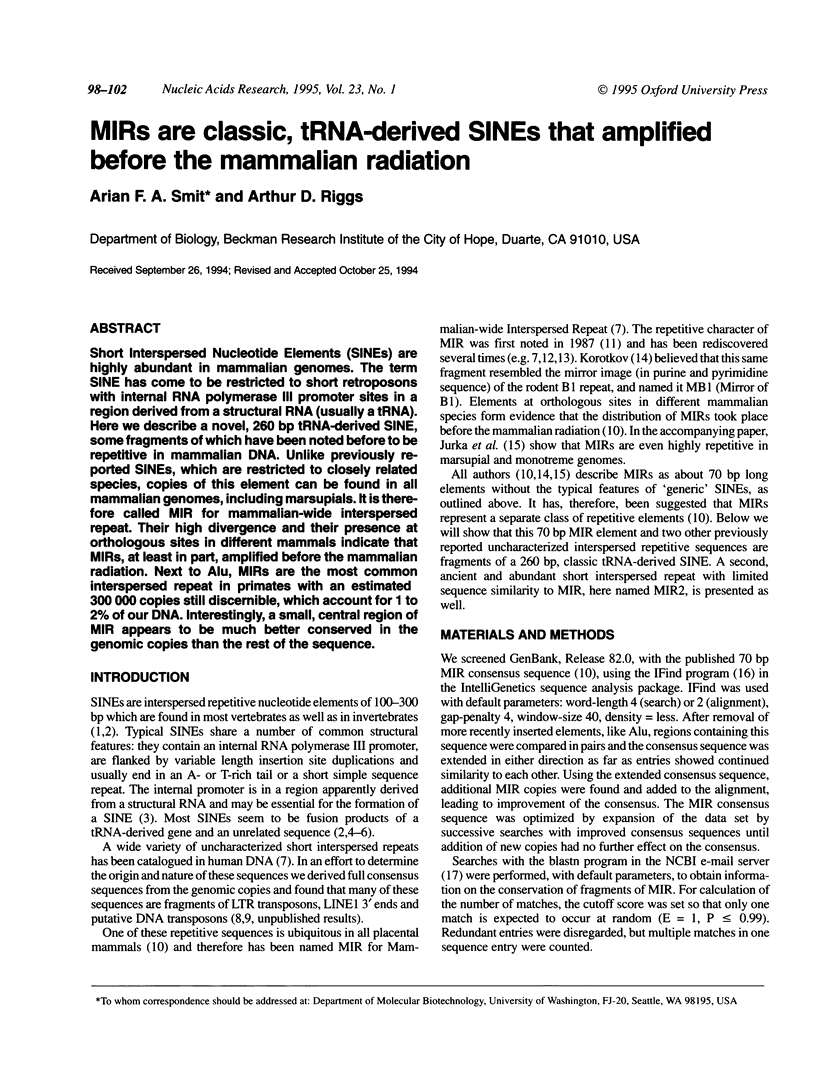
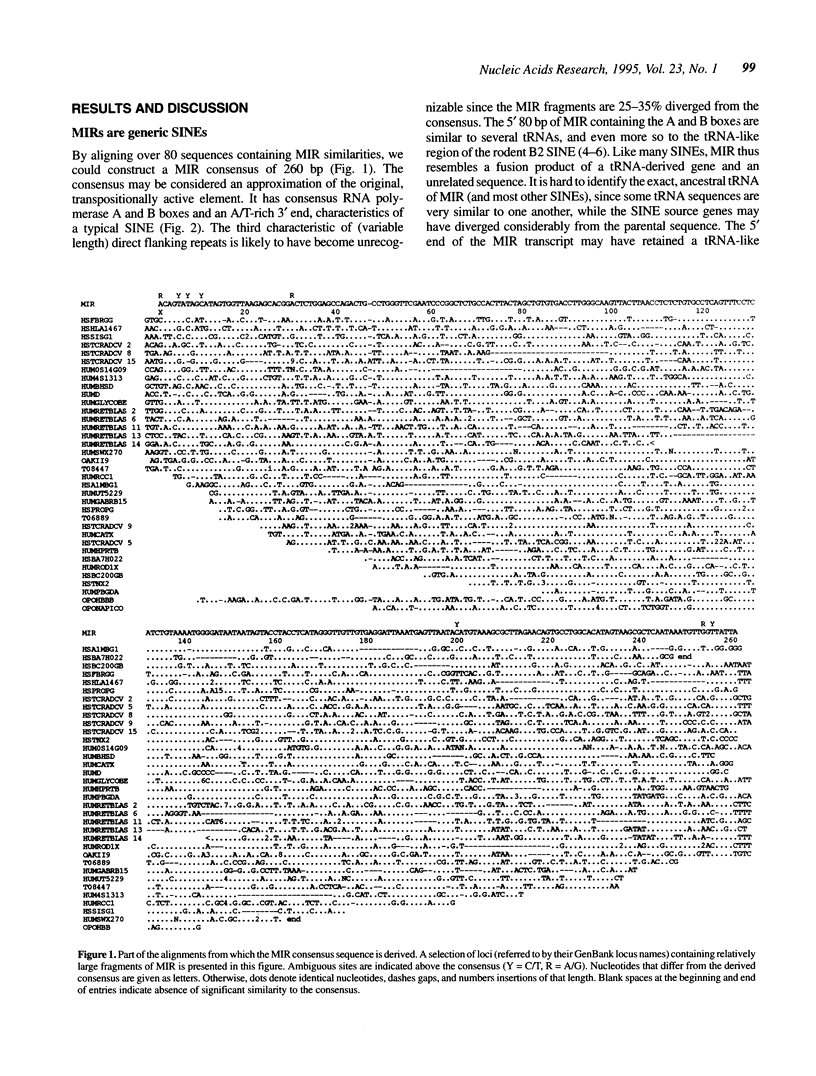
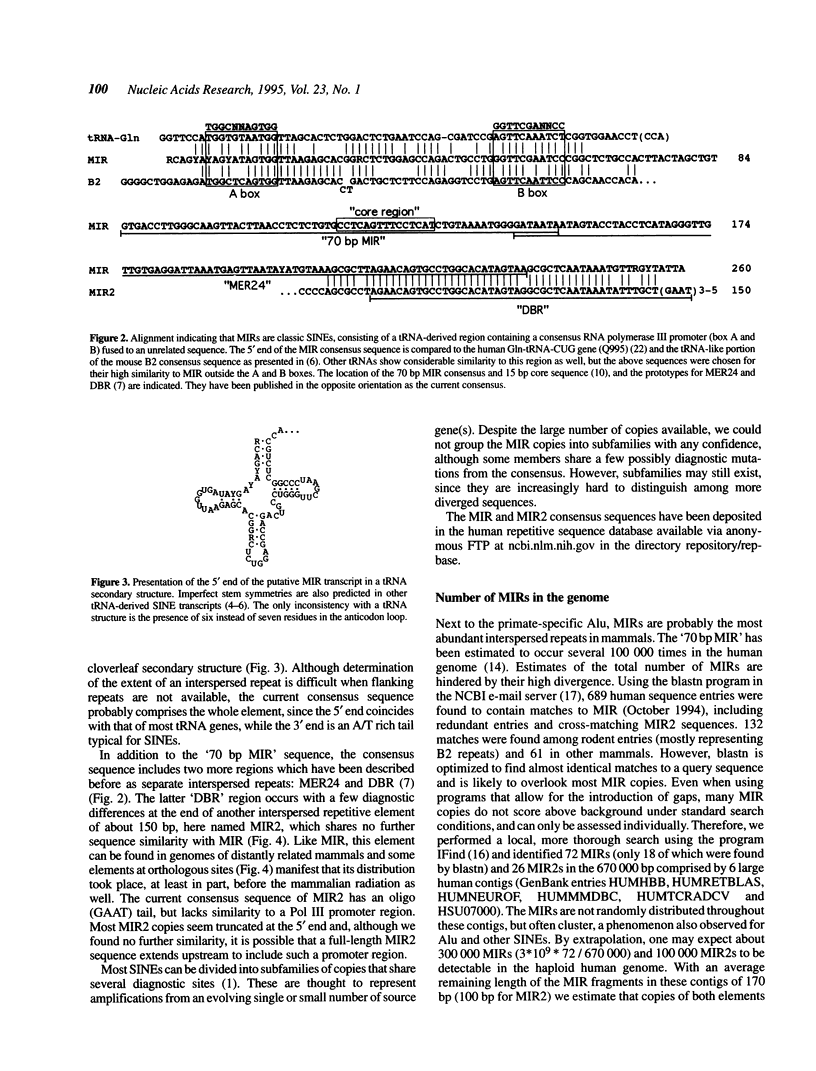
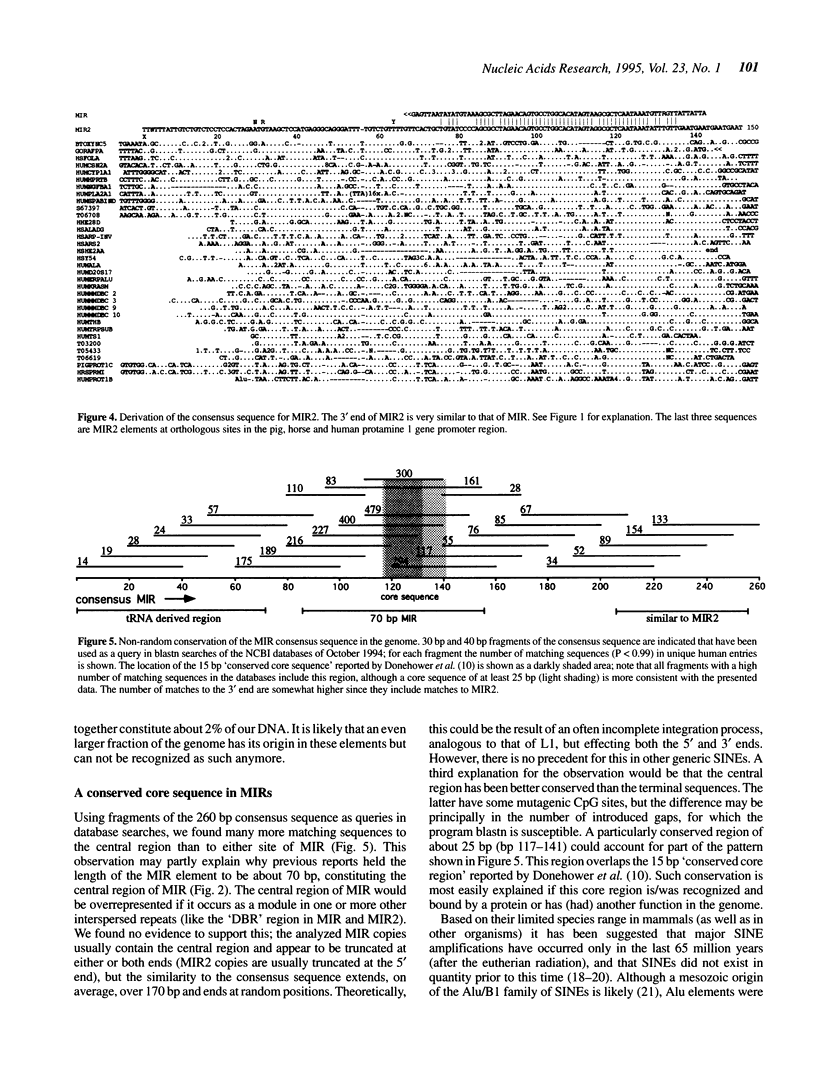
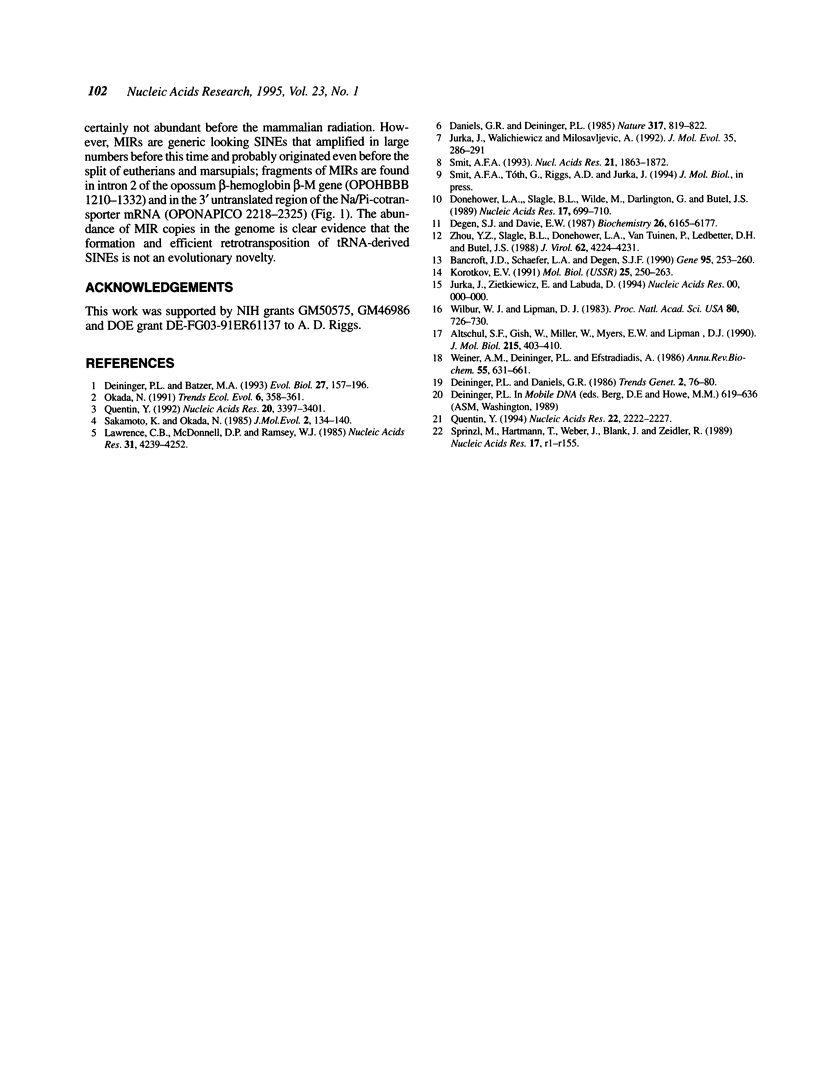
Selected References
These references are in PubMed. This may not be the complete list of references from this article.
- Altschul S. F., Gish W., Miller W., Myers E. W., Lipman D. J. Basic local alignment search tool. J Mol Biol. 1990 Oct 5;215(3):403–410. doi: 10.1016/S0022-2836(05)80360-2. [DOI] [PubMed] [Google Scholar]
- Bancroft J. D., Schaefer L. A., Degen S. J. Characterization of the Alu-rich 5'-flanking region of the human prothrombin-encoding gene: identification of a positive cis-acting element that regulates liver-specific expression. Gene. 1990 Nov 15;95(2):253–260. doi: 10.1016/0378-1119(90)90368-2. [DOI] [PubMed] [Google Scholar]
- Daniels G. R., Deininger P. L. Repeat sequence families derived from mammalian tRNA genes. 1985 Oct 31-Nov 6Nature. 317(6040):819–822. doi: 10.1038/317819a0. [DOI] [PubMed] [Google Scholar]
- Degen S. J., Davie E. W. Nucleotide sequence of the gene for human prothrombin. Biochemistry. 1987 Sep 22;26(19):6165–6177. doi: 10.1021/bi00393a033. [DOI] [PubMed] [Google Scholar]
- Donehower L. A., Slagle B. L., Wilde M., Darlington G., Butel J. S. Identification of a conserved sequence in the non-coding regions of many human genes. Nucleic Acids Res. 1989 Jan 25;17(2):699–710. doi: 10.1093/nar/17.2.699. [DOI] [PMC free article] [PubMed] [Google Scholar]
- Jurka J., Walichiewicz J., Milosavljevic A. Prototypic sequences for human repetitive DNA. J Mol Evol. 1992 Oct;35(4):286–291. doi: 10.1007/BF00161166. [DOI] [PubMed] [Google Scholar]
- Korotkov E. V. Novoe semeistvo shiroko rasprostrannykh MB1-povtorov v genome cheloveka. Mol Biol (Mosk) 1991 Jan-Feb;25(1):250–263. [PubMed] [Google Scholar]
- Lawrence C. B., McDonnell D. P., Ramsey W. J. Analysis of repetitive sequence elements containing tRNA-like sequences. Nucleic Acids Res. 1985 Jun 25;13(12):4239–4252. doi: 10.1093/nar/13.12.4239. [DOI] [PMC free article] [PubMed] [Google Scholar]
- Quentin Y. A master sequence related to a free left Alu monomer (FLAM) at the origin of the B1 family in rodent genomes. Nucleic Acids Res. 1994 Jun 25;22(12):2222–2227. doi: 10.1093/nar/22.12.2222. [DOI] [PMC free article] [PubMed] [Google Scholar]
- Quentin Y. Origin of the Alu family: a family of Alu-like monomers gave birth to the left and the right arms of the Alu elements. Nucleic Acids Res. 1992 Jul 11;20(13):3397–3401. doi: 10.1093/nar/20.13.3397. [DOI] [PMC free article] [PubMed] [Google Scholar]
- Sakamoto K., Okada N. Rodent type 2 Alu family, rat identifier sequence, rabbit C family, and bovine or goat 73-bp repeat may have evolved from tRNA genes. J Mol Evol. 1985;22(2):134–140. doi: 10.1007/BF02101691. [DOI] [PubMed] [Google Scholar]
- Smit A. F. Identification of a new, abundant superfamily of mammalian LTR-transposons. Nucleic Acids Res. 1993 Apr 25;21(8):1863–1872. doi: 10.1093/nar/21.8.1863. [DOI] [PMC free article] [PubMed] [Google Scholar]
- Weiner A. M., Deininger P. L., Efstratiadis A. Nonviral retroposons: genes, pseudogenes, and transposable elements generated by the reverse flow of genetic information. Annu Rev Biochem. 1986;55:631–661. doi: 10.1146/annurev.bi.55.070186.003215. [DOI] [PubMed] [Google Scholar]
- Wilbur W. J., Lipman D. J. Rapid similarity searches of nucleic acid and protein data banks. Proc Natl Acad Sci U S A. 1983 Feb;80(3):726–730. doi: 10.1073/pnas.80.3.726. [DOI] [PMC free article] [PubMed] [Google Scholar]
- Zhou Y. Z., Slagle B. L., Donehower L. A., vanTuinen P., Ledbetter D. H., Butel J. S. Structural analysis of a hepatitis B virus genome integrated into chromosome 17p of a human hepatocellular carcinoma. J Virol. 1988 Nov;62(11):4224–4231. doi: 10.1128/jvi.62.11.4224-4231.1988. [DOI] [PMC free article] [PubMed] [Google Scholar]


